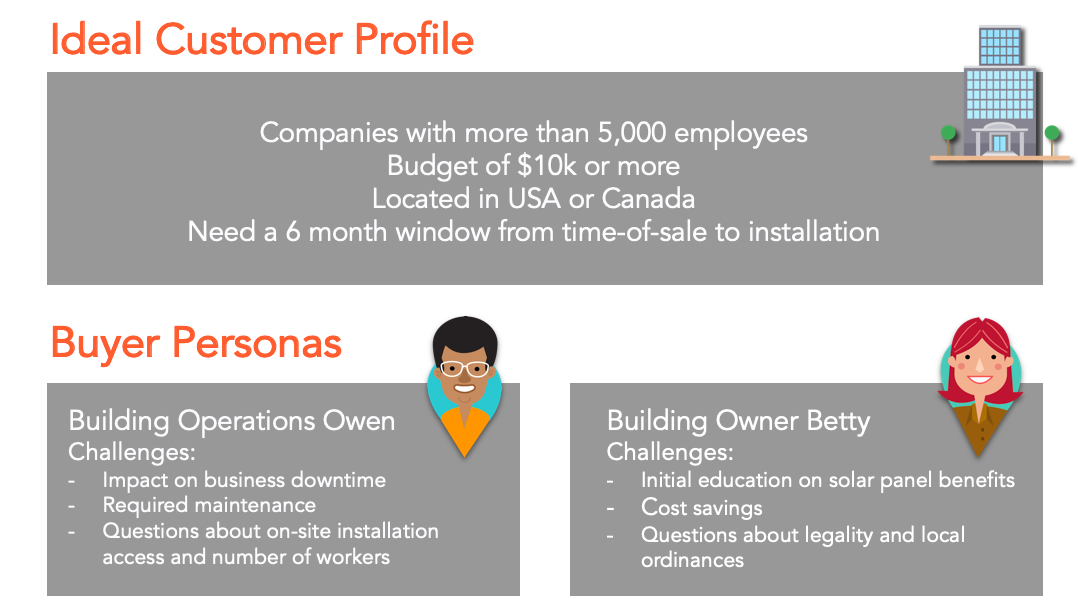Chapter 2
6 minutes
Building a holistic go-to-market strategy with your ICP at the forefront
“Hey, what’s the latest on our TOFU efforts? Where can I find a report to see how many MQLs, SQLs, and SAOs we’ve generated in Q2?”
Does any of that sound familiar? Marketers love acronyms, often speaking in what sometimes seems like a completely different language.
In this chapter, we’ll discuss some commonly used acronyms, including total addressable market (TAM), serviceable available market (SAM), serviceable obtainable market (SOM), ideal customer profile (ICP), and personas (yes, this one isn’t an acronym). While often confusing, understanding these concepts is essential in scaling your business. Skipping these foundational steps means you may enter a market that isn’t viable long-term, lose key investors, or contribute to employee burnout by focusing on the wrong targets.
Let’s break down TAM, SAM, SOM, ICP, and personas and how, together, they help you form a complete go-to-market strategy.
TAM, SAM, and SOM
Try saying that ten times fast.
Before diving into your ICP, it’s essential to understand the broader market landscape. Total addressable market (TAM), serviceable available market (SAM), and serviceable obtainable market (SOM) are all used to describe the market in which your organization operates. When building and scaling your business, quantifying TAM, SAM, and SOM is critical to choosing the right markets to drive revenue for your brand.

Total Addressable Market
If you think of your go-to-market strategy as an onion, the first layer is your total addressable market, or TAM. Your TAM represents the total market possible for your product or service and estimates the market’s revenue potential.

To calculate your TAM, take the number of potential customers and multiply that by your ACV (annual contract value).
For example, imagine you sell software to ecommerce brands. If there are 1,500 ecommerce brands in the world (for the sake of this example) and your annual contract value is $20,000, the market potential would be $30 million.
Serviceable Available Market
The next layer of the onion is your serviceable available market (SAM). This is the portion of your market you can acquire based on your business model. For example, your business model may not support certain geographies, so your SAM serves as a subset of your TAM. To calculate your SAM, multiply your target segment of your TAM by your annual contract value.
Referring to the example above, let’s say out of the 1,500 ecommerce brands in the world, your business can only service a certain geographic location, which brings the number down to 1,000 ecommerce brands. At the same ACV of $20,000, your Serviceable Available Market would be $20 million.
Serviceable Obtainable Market
Pulling back the onion another layer brings us to your serviceable obtainable market (SOM), which identifies how many customers would realistically buy your product or service. Even though you could hypothetically service 1,000 ecommerce brands, it’s unlikely all will become customers. Some of those brands may choose to go with a competitor, build their own solution in-house, or do nothing.
To calculate your SOM, multiply last year’s market share (calculated by dividing your previous year’s revenue by your previous year’s SAM) by this year’s SAM. For example, if last year’s revenue was $4 million, last year’s SAM was $20 million, and this year’s SAM is $25 million, your SOM would be $5 million. This calculation helps determine short-term growth targets.
Ideal Customer Profile and Personas
Now that you’ve identified the market potential, it’s time to get even more specific about which companies and individuals will provide the most value to your business.
While your SOM identifies a hypothetical market potential in terms of dollars, it doesn’t consider which companies will be the best fit for your product or service based on your defined success criteria and historical data.
Ideal Customer Profile
As we mentioned in chapter one, your ICP is based on key company-level firmographic and technographic data points and serves as a representation of the customers and prospects that you believe will provide the most value to your business.
Some attributes and characteristics to consider when building your ICP include:
- Budget
- Revenue
- Industry
- Geography
- Legality
- Employee count
- Technology used
Your ICP should be at the forefront of your go-to-market strategy. Here are some ways you can focus execution around your ICP:
- Set up your marketing operations and analytics to prioritize ICP leads and accounts. Using a combination of tools like HubSpot and Clearbit, you can build processes that identify when a contact or account is a good fit based on ICP criteria. This can then be passed to sales and marketing teams for outreach, ABM campaigns, and more.
- Measure all goals and success metrics against your ICP. You just launched a campaign and it generated 1,000 leads. Time to celebrate! Or, is it? While bringing in lots of interest is a piece of the marketing puzzle, understanding which leads and opportunities are a good fit based on your ICP is most important in driving efficiency and revenue growth.
- Continue to re-evaluate your ICP on an ongoing basis. As you enter new markets or segments, your ICP may need to change.
We’ll dive into how you can calculate your ICP in the next chapter.
Personas
The final layer of the onion are personas. Personas are representations of the individuals who buy and use your product or service. Buyer personas typically include individuals’ motivations, pain points, buying habits, and more. Most companies have more than one target persona. Companies may build separate personas for the people who buy their product vs. use their product, for example. Having clearly defined personas enables teams to run more efficient, effective, and targeted campaigns.
Some questions to consider when building buyer personas include:
- What are their top pains and challenges?
- What are their KPIs?
- What are their responsibilities?
- To whom do they report?
- What is their role in the buying process?
While your ICP is built at the company level, personas represent individuals. Your ICP and buyer personas together may look something like this:

To recap, TAM, SAM, and SOM identify market potential and are represented by a dollar value. Your ICP takes that a step further and serves as a definition of the companies that are the best fit for your business and likely to drive the most value. Personas are the individuals who buy and use your products.
Now that you know what an ICP is and how it relates to your broader go-to-market strategy, let’s talk about how to actually define your ICP.

